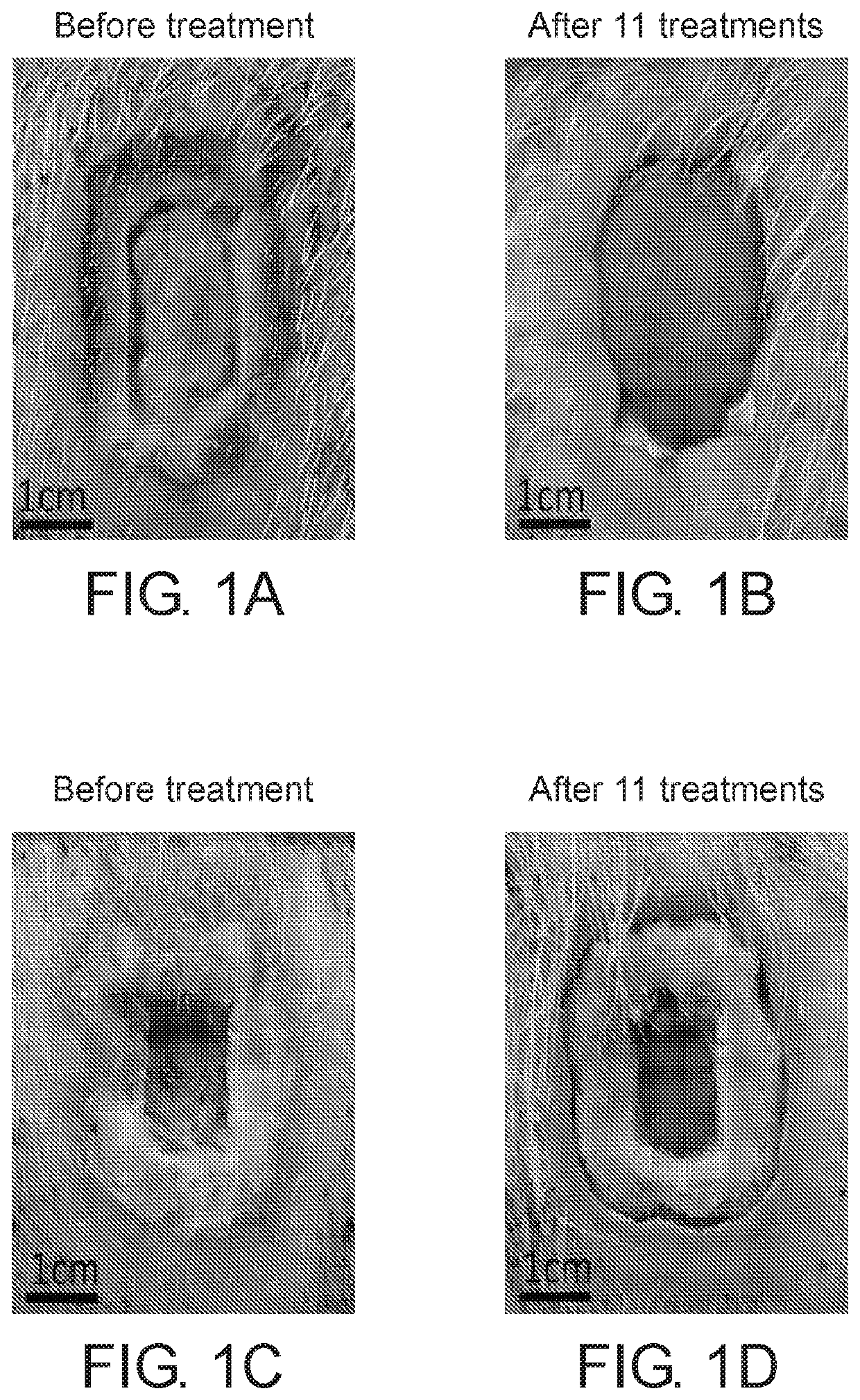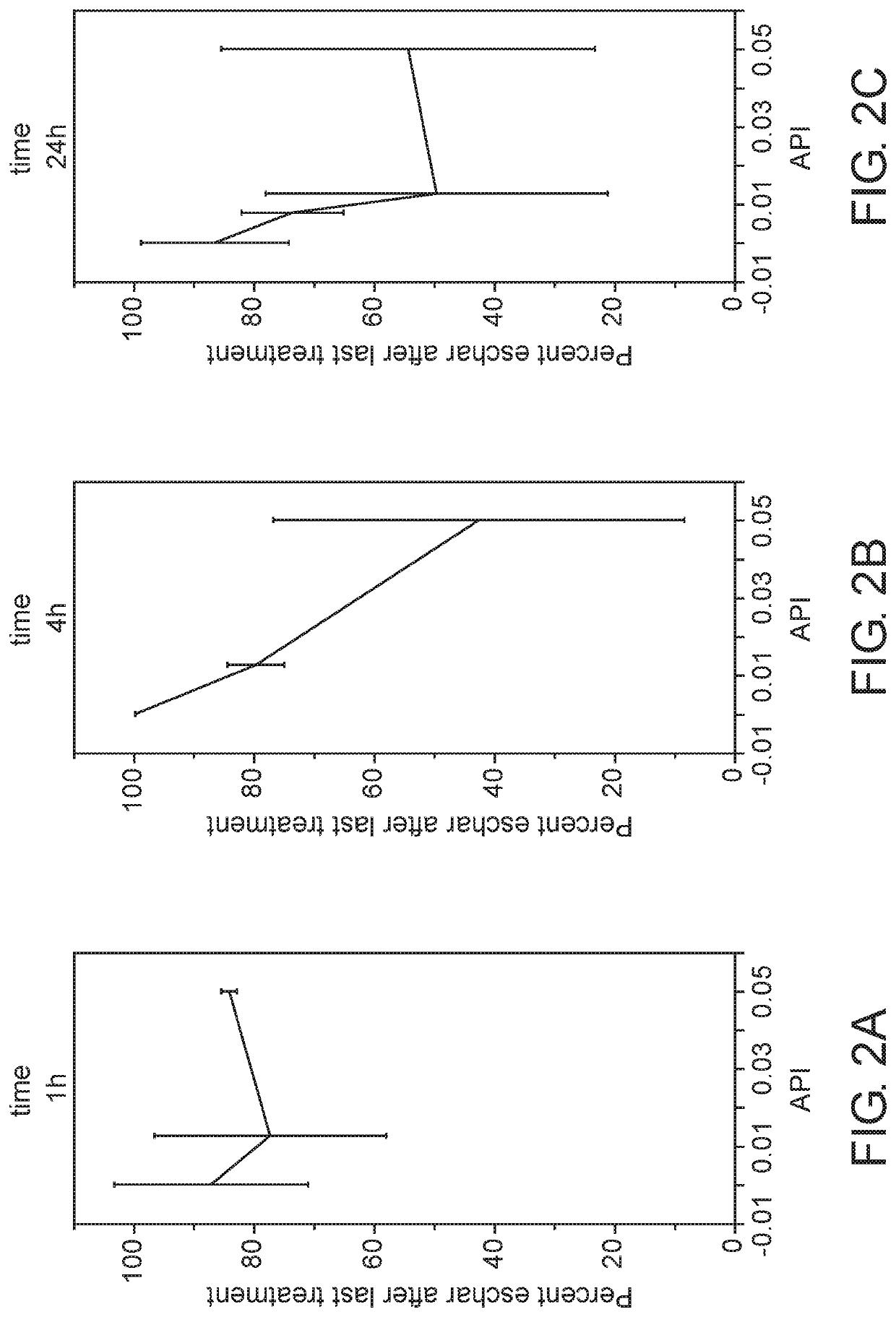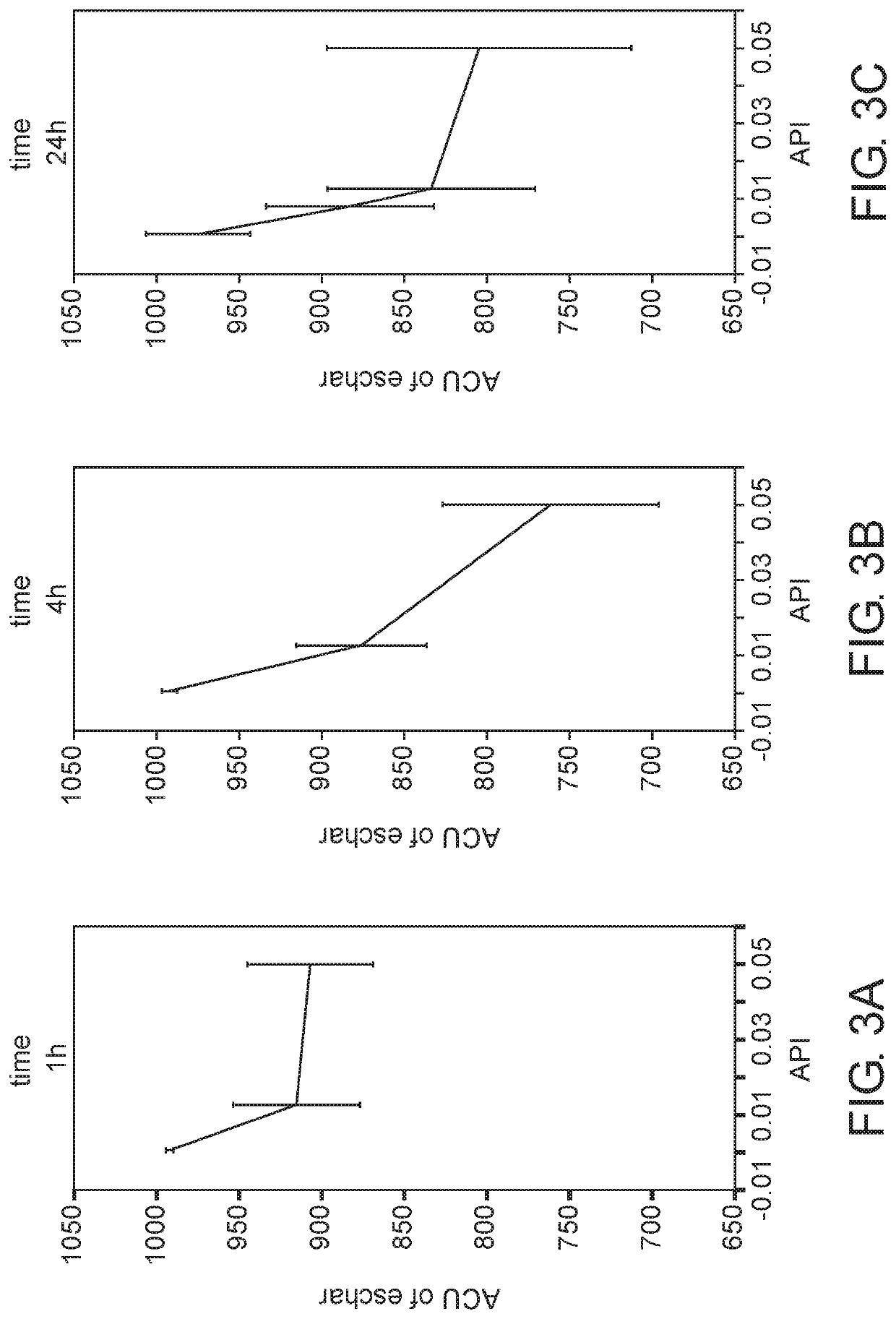Debriding composition for treating wounds
a technology for wounds and compositions, applied in the direction of aerosol delivery, peptide/protein ingredients, inorganic non-active ingredients, etc., can solve the problems of severe skin damage, difficult wound healing, and affecting millions of people annually
- Summary
- Abstract
- Description
- Claims
- Application Information
AI Technical Summary
Benefits of technology
Problems solved by technology
Method used
Image
Examples
example 1
Toxicity Study of Gel Formulations
[0147]This study aimed at evaluating the dermal toxicity of two gel formulations. Both gel formulations were aqueous formulations which contained 0.9% Carbopol 980NF. However, only one of the formulations contained 10% glycerol. The gel formulations also contained a mixture of proteolytic enzymes obtained from bromelain in an amount of 2.5% or 5% w / w of the total weight of the gel formulation.
[0148]The proteolytic mixture obtained from bromelain, designated herein after API to denote the active pharmaceutical ingredient, also known as Debrase® or NexoBrid®, was prepared as previously described (see, for example, WO 2013 / 011514). Prior to treatment, API in an amount of 1 gr powder or 0.5 gr powder were mixed with 20 gr of a gel vehicle which contained the following constituents: 0.9% w / w Carbopol® 980NF with or without 10% w / w glycerol, 0.25% w / w di-sodium hydrogen phosphate anhydrous, and water. Prior to application onto a skin site, the gel vehicle...
example 2
Effect of Application Duration and API Amount on Chronic Wound Treatment
[0155]This study aimed at determining the application duration and the amount of API in the gel formulation which are necessary to achieve maximal efficacy of eschar removal in chronic wounds.
[0156]A chronic wound model was established in crossbred domestic pigs. Four amounts of API (0, 0.75%, 1.25% and 5% w / w) were mixed with the gel vehicle containing glycerol as described in Example 1 herein above and were applied on a chronic wound for three application durations (1 hr, 4 hours and 24 hours) for 10 consecutive days. At the end of the ten day period, also denoted the “treatment period”, the chronic wounds of the pigs were observed for additional 14 days, denoted “the recovery period”, to evaluate the effect of debridement on the healing rate of chronic wounds.
[0157]The chronic wounds were photographed at the beginning and during the treatment period as well as during the recovery period. The eschar area and t...
example 3
Efficacy and Safety of API in the Gel Formulation—Clinical Study
[0173]The aim of this study was to assess the efficacy and safety of the EscharEx Gel in preparing the wound's bed in subjects with hard to heal venous leg ulcers, diabetic lower extremity ulcers and traumatic / post-operative wounds.
[0174]A multicenter, randomized, vehicle-controlled, assessor blinded study was performed in subjects with hard to heal wounds to evaluate the efficacy and safety of the API in the gel formulation disclosed in Examples 1 and 2 herein above for preparing the wound's bed in patients with hard to heal venous leg ulcers, diabetic lower extremity ulcers and traumatic / post operative wounds.
[0175]The study included 73 subjects that were treated with EscharEx Gel or Gel Vehicle in up to 10 daily treatments, 4 hours±15 minutes application time each. This period was defined as the “Treatment period”. Following each application, the wound was washed, photographed, and assessed clinically for wound size,...
PUM
| Property | Measurement | Unit |
|---|---|---|
| viscosity | aaaaa | aaaaa |
| viscosity | aaaaa | aaaaa |
| time | aaaaa | aaaaa |
Abstract
Description
Claims
Application Information
 Login to View More
Login to View More - R&D
- Intellectual Property
- Life Sciences
- Materials
- Tech Scout
- Unparalleled Data Quality
- Higher Quality Content
- 60% Fewer Hallucinations
Browse by: Latest US Patents, China's latest patents, Technical Efficacy Thesaurus, Application Domain, Technology Topic, Popular Technical Reports.
© 2025 PatSnap. All rights reserved.Legal|Privacy policy|Modern Slavery Act Transparency Statement|Sitemap|About US| Contact US: help@patsnap.com



